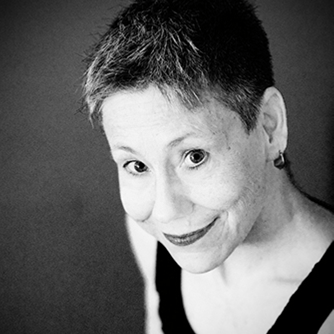At MLA in Philadelphia, the theme was translation, the community was out in force, and the Benjamin evoked was Walter, not Franklin. Here the discussion of translation focused not only on technique or publication, butalsoon teaching and training: how to incorporate foreign literature in the curriculum, how to guide and develop the next generation oftranslators, and how to improve tenureaccreditation for translation work. While manypresenters were translators, others were specialists who do not themselves translate. This led to panels that combined both theory and practice, a rare and wondrous thing at an academic conference. And since panelists were based in both English and foreign language departments, they framed the use of foreign literature in classes in correspondingly varied ways.
Stefanie Sobelle of Gettysburg University, who’s spearheading our education initiative, organized and moderated “World Literature in the Classroom: Pedagogies in Literature and Translation.”Each of the participants—Stefanie, Bella Brodzki of Sarah Lawrence, Karen Emmerich of Columbia, Blake Locklin of Texas State, and Nicole Rizzuto of Oklahoma State—spoke from her own perspective on incorporating foreign literature in curricula.
Stefanie teaches a class called “Americawith a K” that considers how the USis mythologized and allegorized around the world. The challenge here is in reading in English without being US-centric: as Stefanie noted, Nabokov’s roadscapes and description of American culture in Lolita are familiar, so don’t register as coming from a foreign perspective. When she teaches Saadat Hasan Manto’s “Third Letter to Uncle Sam,” on the other hand, students are offended by the author’s presuming to speak for the US, and criticizehis perceived anti-Americanism, until they realize that the piece was written in Urdu for an Urdu audience.
Bella Brodzki, a professor of comp lit, teaches “Global Intertextualities,”in which she uses only texts published in the last decade, half of which are translations. Bella points out to her students that the history of literature is the history of translated literature, and alerts them to the tension between domesticating/Anglicizing, on the one hand, and making foreignness apparent. In the transnational space, narrators become native informants, and the reader must maintain the interpretive balance between texts in their own and foreign contexts.
Nicole Rizzuto, a postcolonial specialist, describedher process of choosing texts, separating Western from non-Westernwork,and considering theresponsibility to the “other” (a term, as Françoise Lionnet of UCLA pointed out in the discussion, to be used with care.) Nicole also addressedthe problemof the commodification of otherness and the need to maintain vigilance through reading; and she confirmed the goal of presenting international literature as locally inflected, transnationally global.
Blake Locklin spoke to the inclusion of emergingwriters and the various methods of fittingliterature into different courses. Emerging writers are not always contemporary, and using their work depends on its availability. Her honors class in English decentralizes the general topic ofEast and West by triangulating with Asia.Blake and Nicole both teach in state schools with predominantly in-state student bodies, which adds to the urgency of establishing historical and cultural contextsin which to read international literature.
Karen Emmerich, the dazzling Greek translator(and with her brother Michael, the yokozuna of contemporary Japanese, the top sibling act in the field), spoke as both translator and educator. Karen’s yearlong Great Books course presents translation as both interpretive act and canonical imperative. In establishing a canon of teachable texts, multiple translations can suggest a work en route to canonical status. Karen also suggested that educatorstalk about the role translators play, and noted that the syllabus also makes an economic decision in selecting which translations to use.
The panel then wrapped up with a few remarks from me about WWB and its multiple possibilities for course adoption, after which the floor opened to a lively discussion. The room was standing room only, with the front row practically in our laps—a gratifying turnout for a noon panel competing with any number of intriguingtopics.
Despite the general giddiness, this was still MLA: not lacking in the arcane, the risible, and the ludicrous (the profession may never recover from Eve Kosofsky Sedgwick’s “Jane Austen and the Masturbating Girl”in 1990),and an incubator for professional anxiety (nine thousand in attendance, all of them applying for the same three jobs). And one cannot overlook that translators teach not only from love and conviction, but also to make the living that translating alone cannot provide. But the focusmade it a heady few days, and a restorative change of perspective on how translation can function—thrive—in the world.








